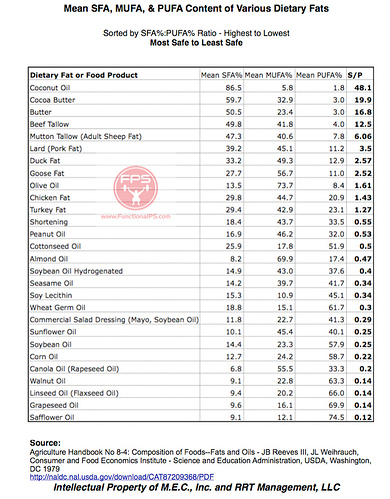Dear all,
I have searched the forum for deep fat fryer recommendations, but I guess I am looking for a response from the Canadian/US suppliers in order to source one that is the correct voltage.
I want a fryer that I can use beef fat, or lard to deep fry chicken wings or legs or whatever I want in.
I note that some require a preheat of lard in a separate vessels first. But I am hoping I can avoid that.
Any recommendations.
I don’t really want the Bass Pro, turkey shoot fryer propane burner type! More the household type.
Thank you to you all.
Annie
Best deep fat fryer for lard, tallow, beef dripping? Canada or US brand
Here is a good blog post about one ketonian’s quest to find the perfect lard frying machine:
The options are limited, but there are a couple out there referenced in the article. The author of the article opted for the DeLonghi D677UX which he seemed to like. The article mentions that the Fry Daddy line of deep fat fryers are also an option.
I use a regular fryer. I take my tallow (what I normally use) and put it in a sous vide to heat up to a liquid state, then dump the liquid into the fryer. I use one of these and an extra jar:
I fill the water in the sous vide to be near the top of this (but not over the top, of course).
Sorry, I didn’t see you wanted to avoid the extra step of heating the fat.
I went that step because I didn’t think the models without a heating element in the oil would actually work well. As an engineer, it seems the models with a heating element in the oil/fat would have to work better than the models with the heating elements on the outside, though I could be wrong.
The blog above mentions that having a heating element that touches the fat may be the problem. And that is why he recommends those types.
I use duck fat a lot too, that is almost liquid at room temperature, but I am not sure whether it is suitable for repeated heating?
Thankyou @ctviggen and @Don_Q for your help. Much appreciated.
It’s mainly about the PUFAs (polyunsaturated fatty acids). The reason tallow is good is because it’s really low in PUFAs. Lard and duck fat and the like are higher, though not nearly as high as vegetable oils.
If you take a look at this article and scroll waaaayyy down, they have a table:
So, you could probably use them. I personally find tallow to be not that great, in the sense that after a few uses (about a handful), I have to replace it. This is mainly because everything I put into the fryer ends up in the oil, and even running the oil through a filter means that it’s not that clean anymore.
But tallow is way better than vegetable oils.
So, looking at that table, the “best” “seed” oil is peanut oil, which is about three times as high in PUFAs as lard, duck fat, and goose fat, which themselves are about three times higher in PUFAs than tallow.
And this table does not include smoke point, either.
@ctviggen, the article was really helpful to read. I do have coconut and avocado oil. I guess my research needs to focus on smoke point too.
I am trying hard to get back on the keto wagon, having struggled to stay true over the last 12 months. I paid the price and put back on 8-9 kg!
There is no place in my life for carbs over 20g a day.
I have spent most of my adult life solidly refusing to have a chip pan (I am from the UK originally). Thinking of frying as sending me to an early grave, but I think it is high time I added one to my kitchen supplies. There is space in the larder/pantry where the cereals used to live.
Thankyou for your responses
At our house, I will fry chicken (including so called “chicken tenders” in the US, though everyone agrees these are best with dark chicken meat, and they are usually white chicken meat), and fried cheese (mozzarella cheese), among other things. But I know the fat I’m using.
When we go out, it’s a different story. I just assume everything will be fried in vegetable/seed oils, which is never changed and rancid. However, even I will eat fried food out sometimes. I just try to avoid eating it that much.
Another possible fat is palm oil, but then you have to be concerned how it was harvested. It’s also a solid at room temperature, so you have to preheat it too.
I bought the T-Fal Uno fryer a few years ago because it had the heating element that was not immersed directly in the fat, but built in to the floor of the frying chamber. It looks like the new T-Fal model that replaced it is called the Compact, but I haven’t looked at one in person to verify the design is the same

